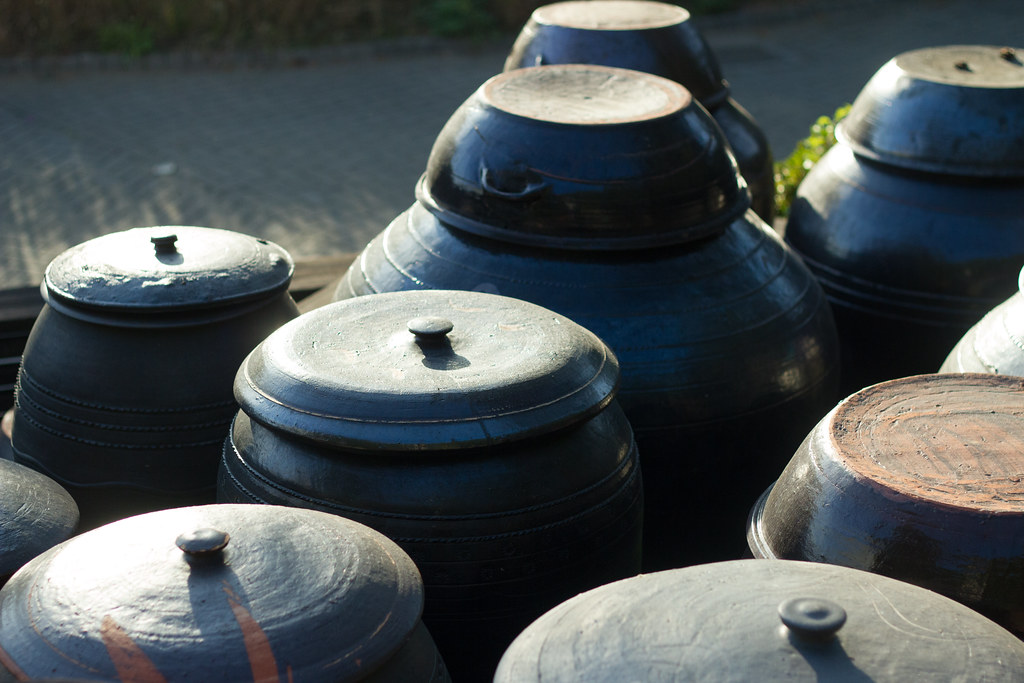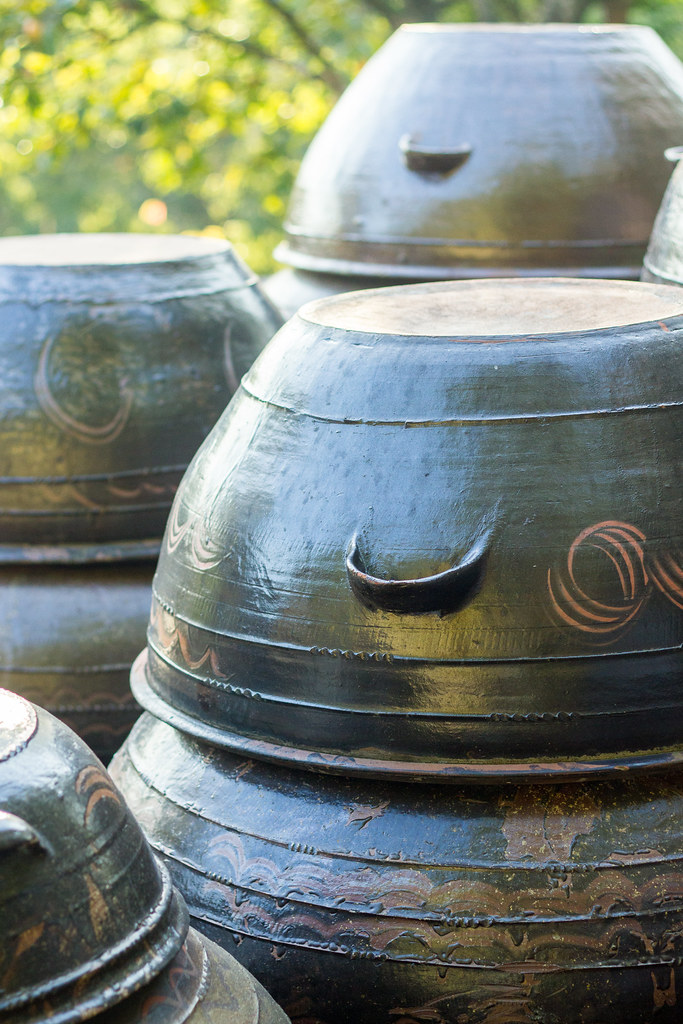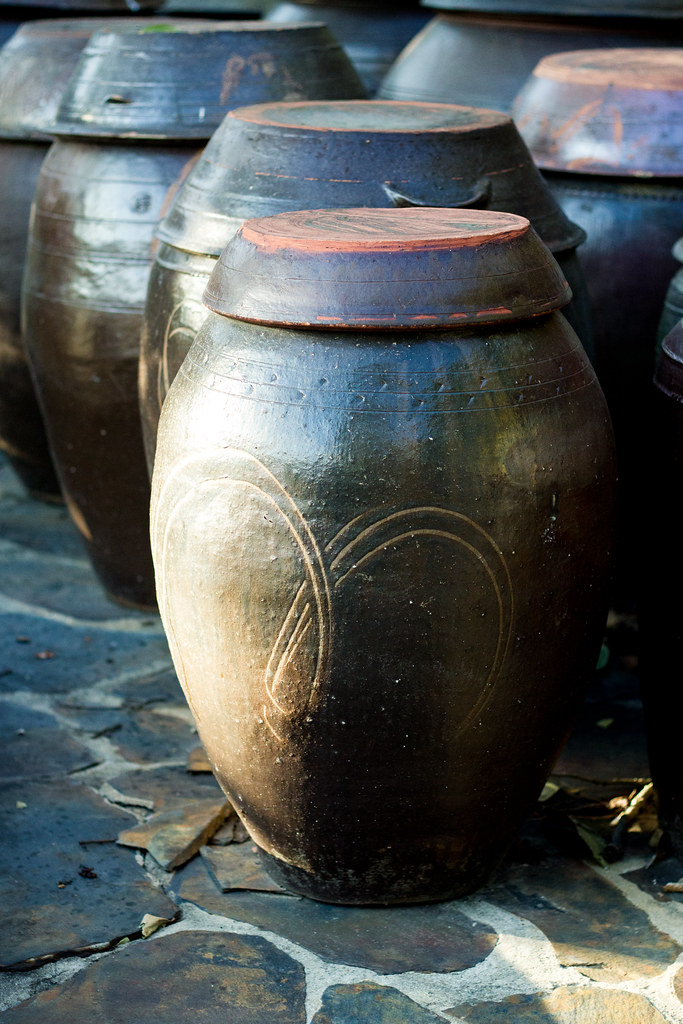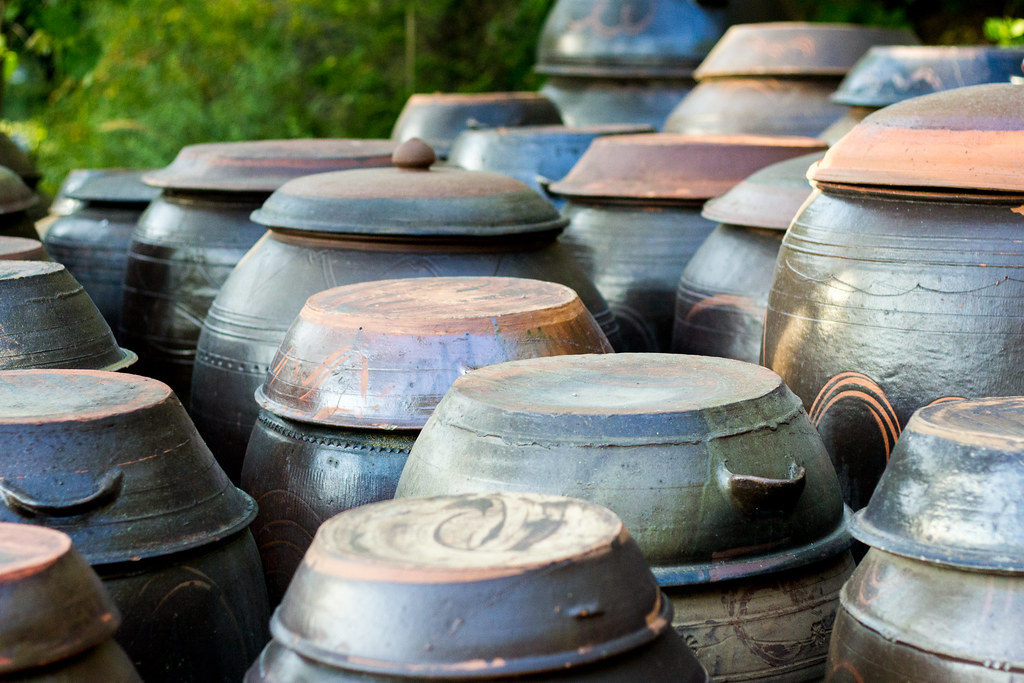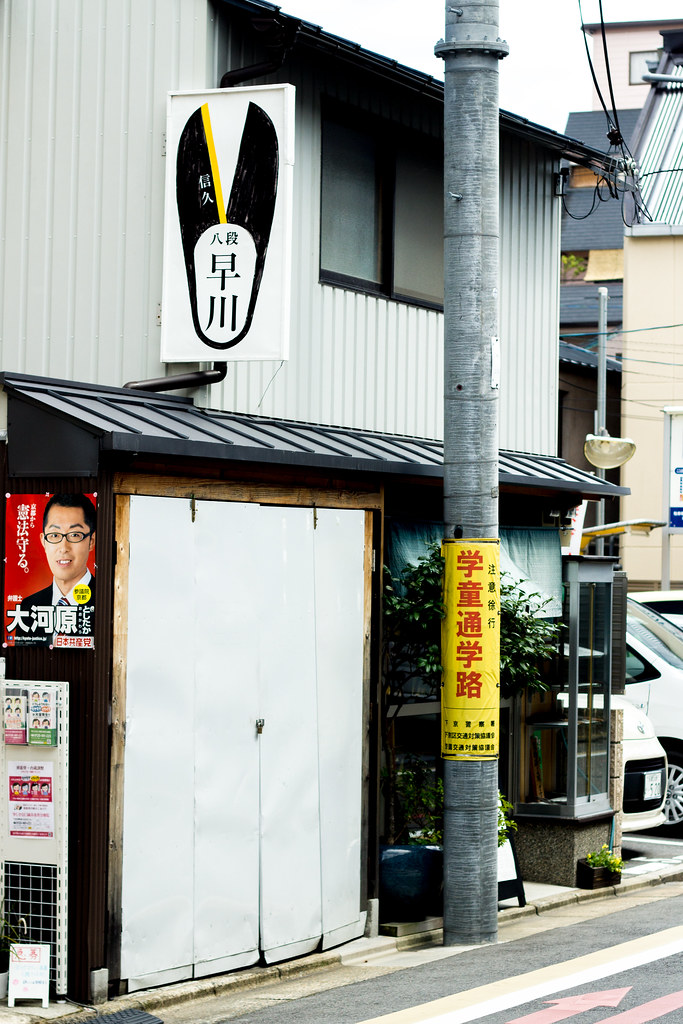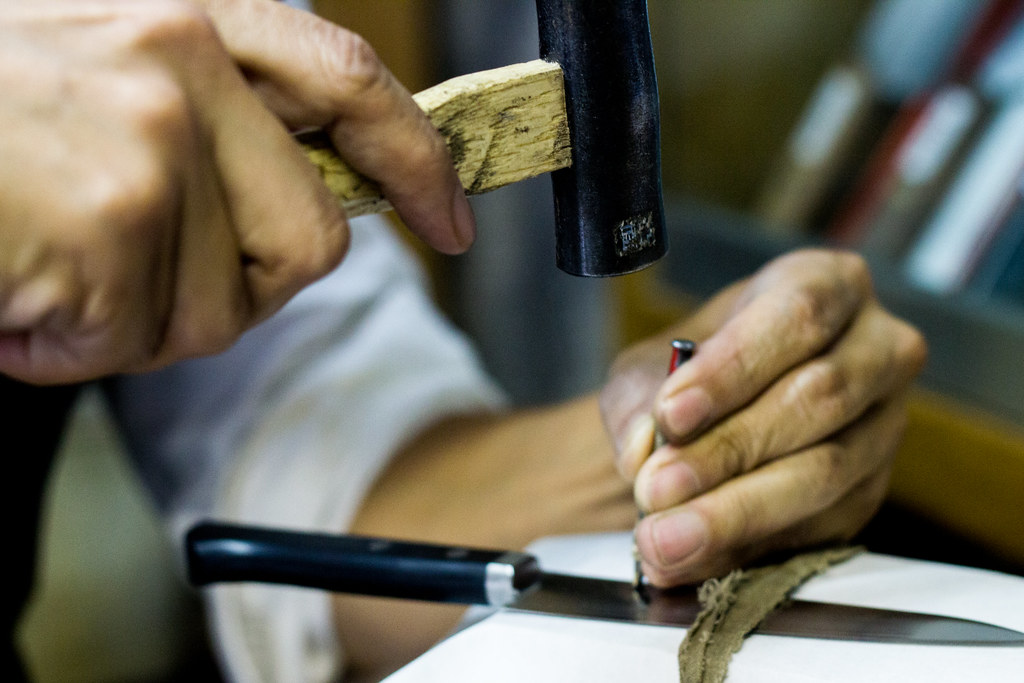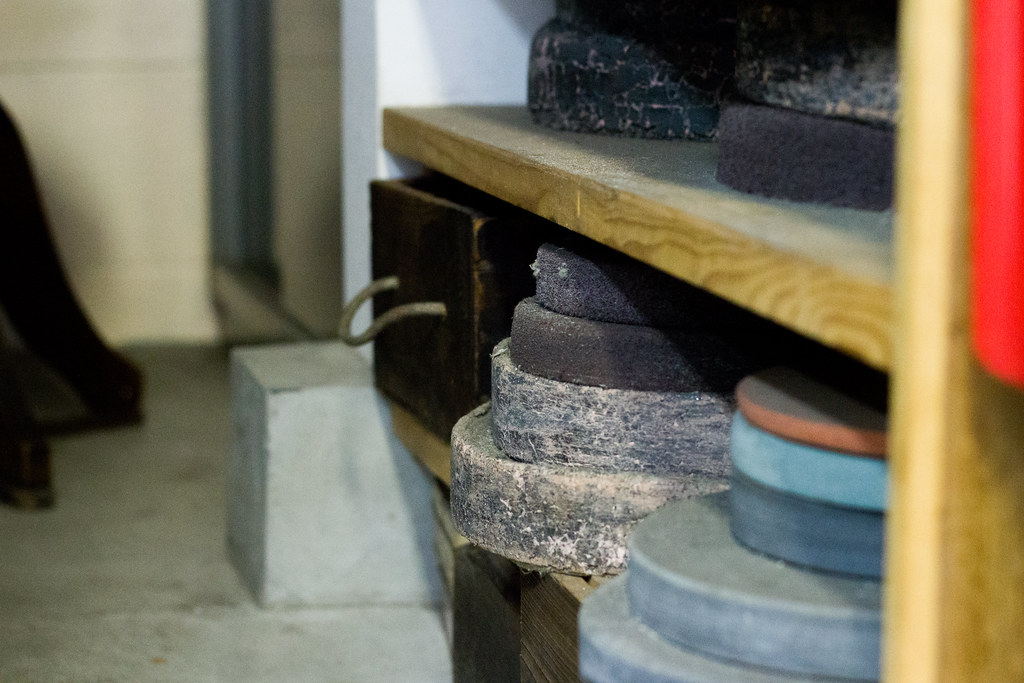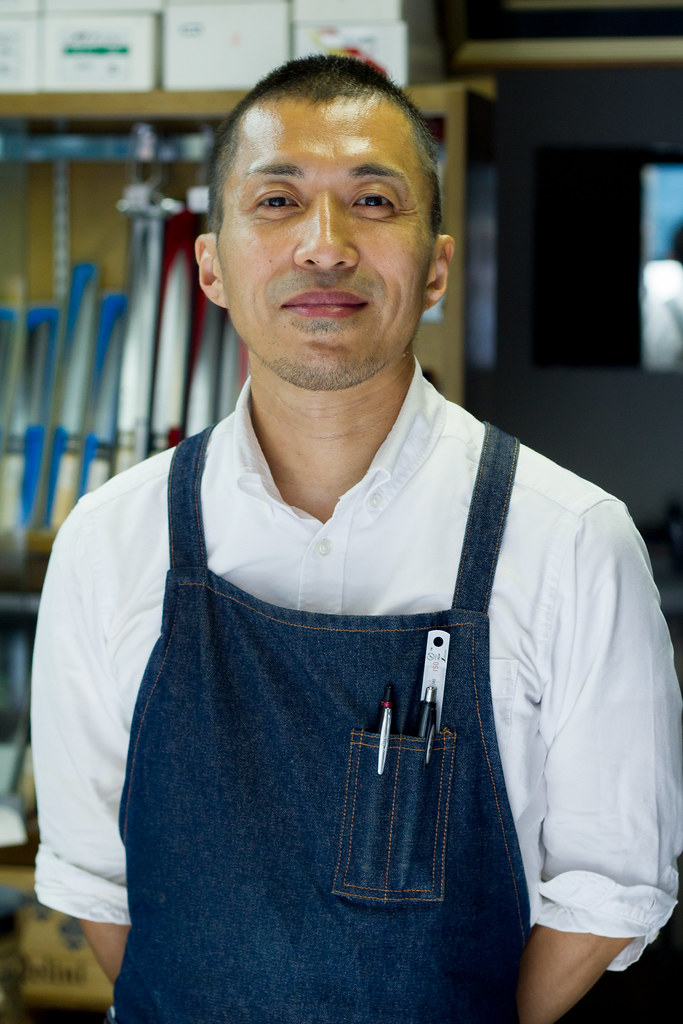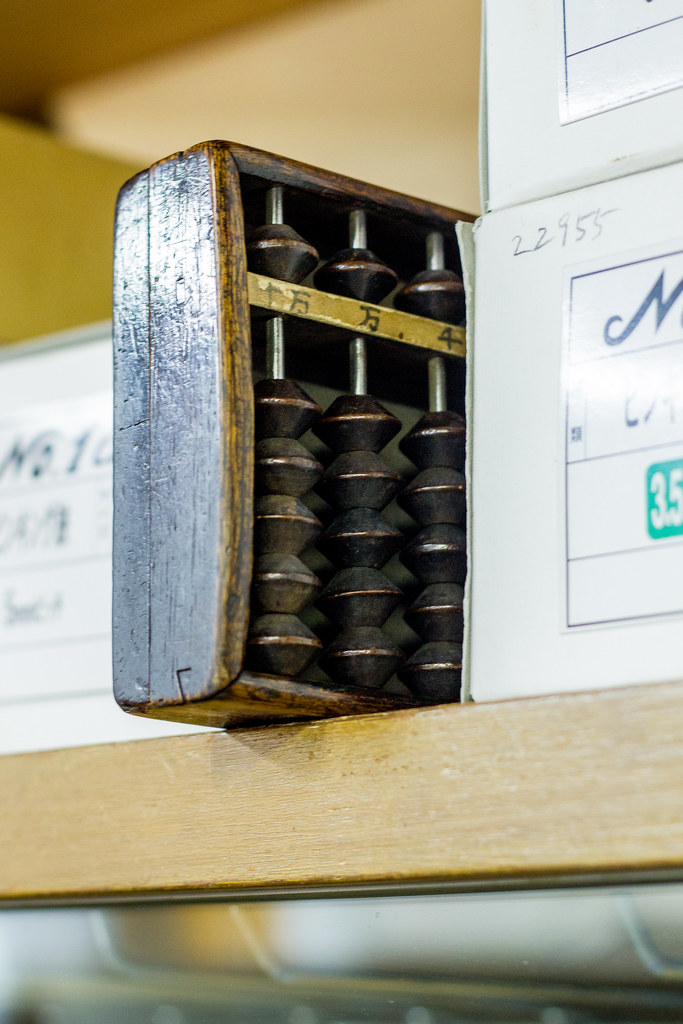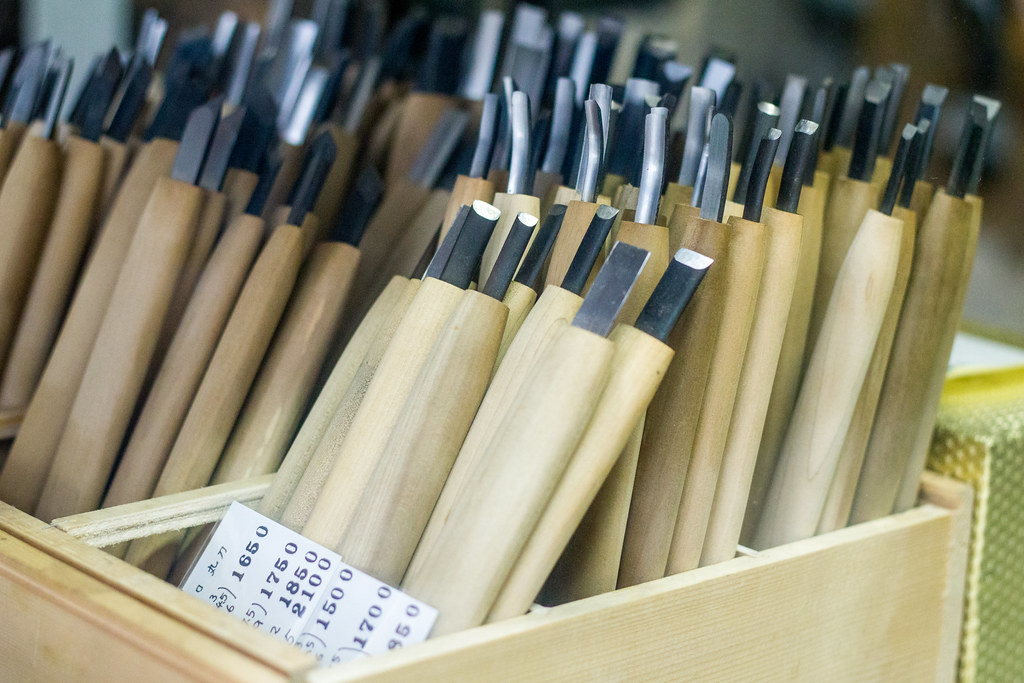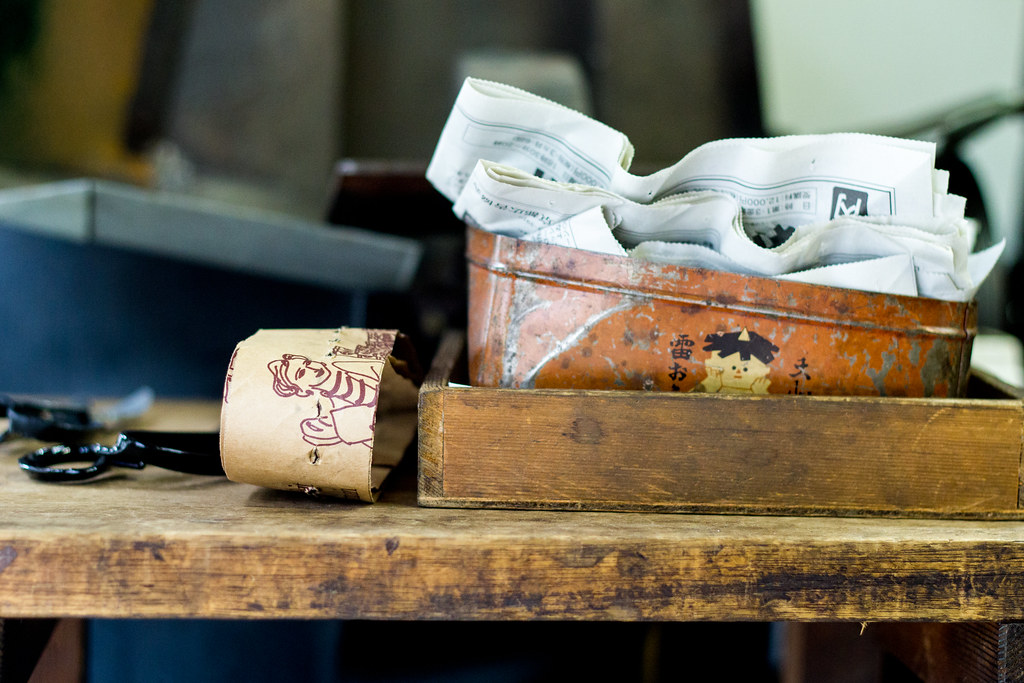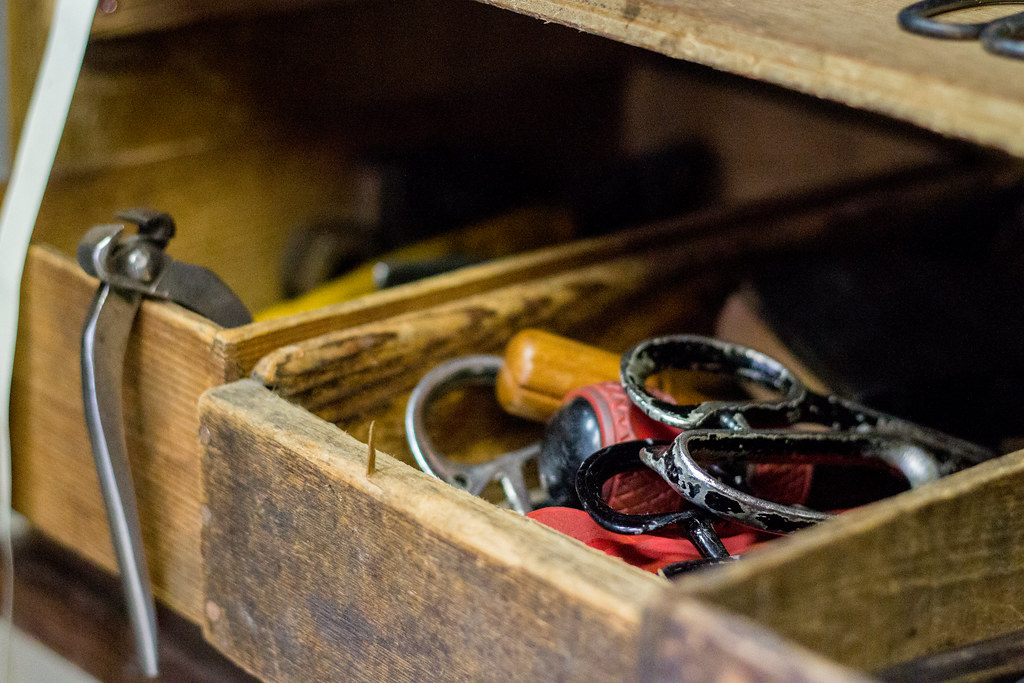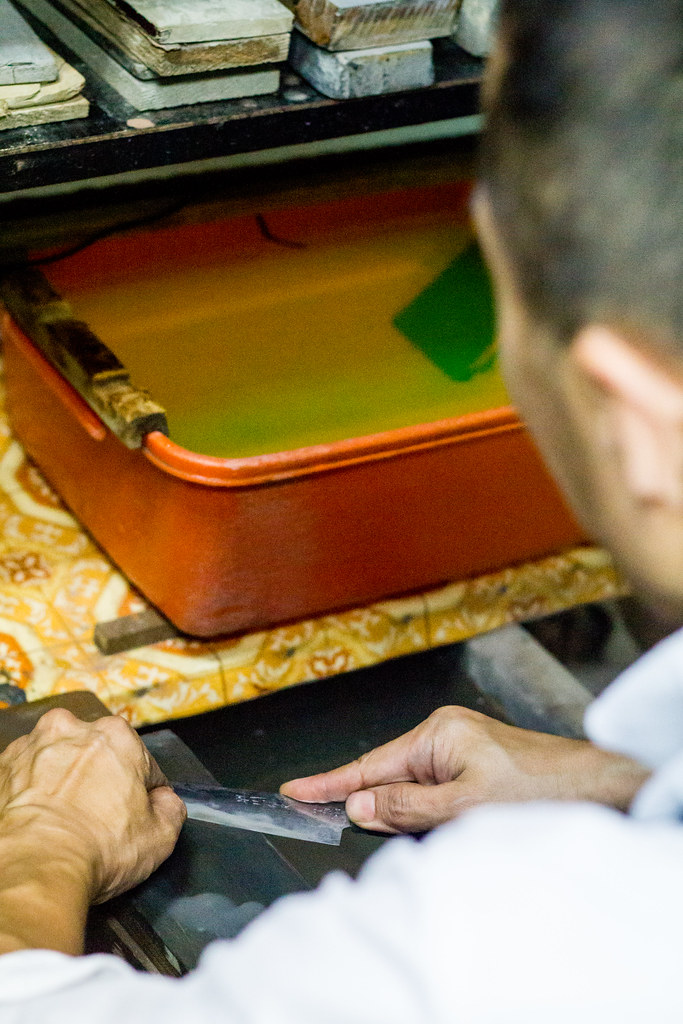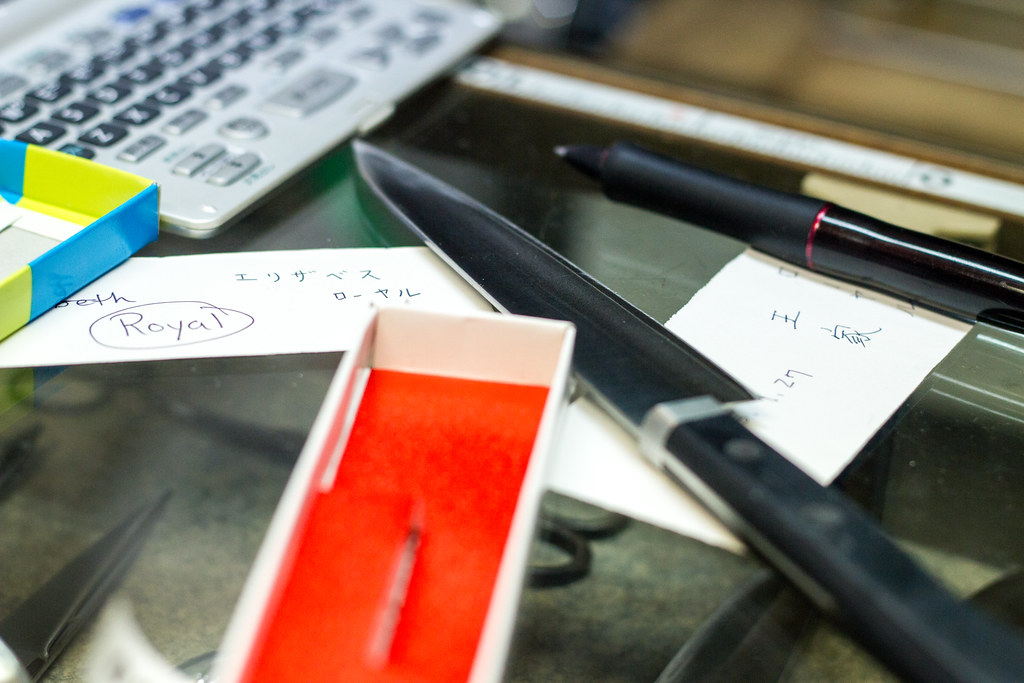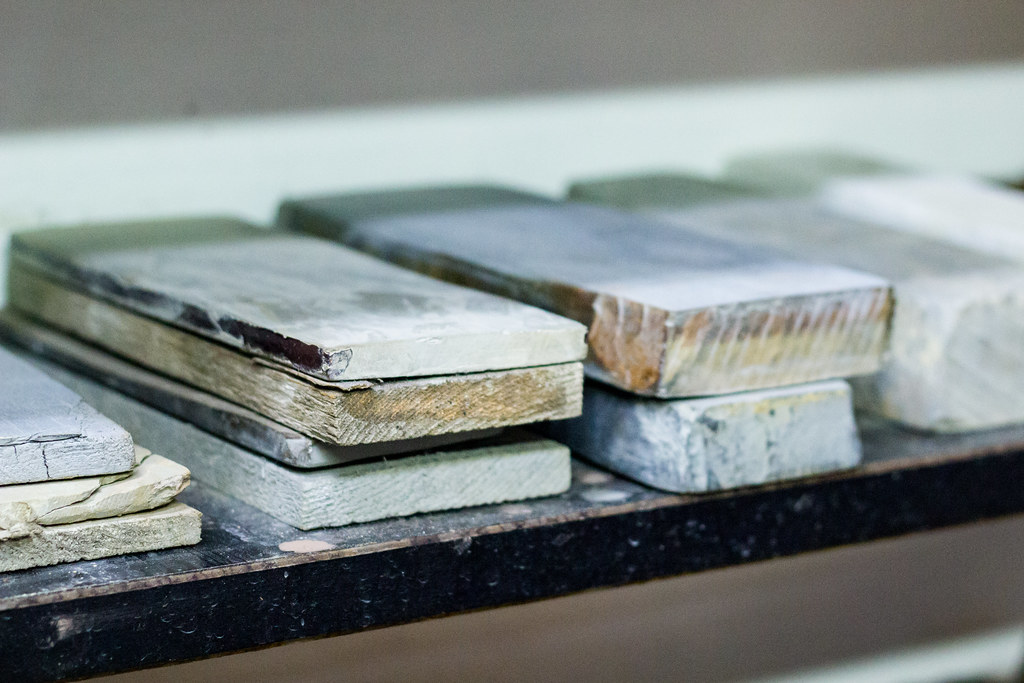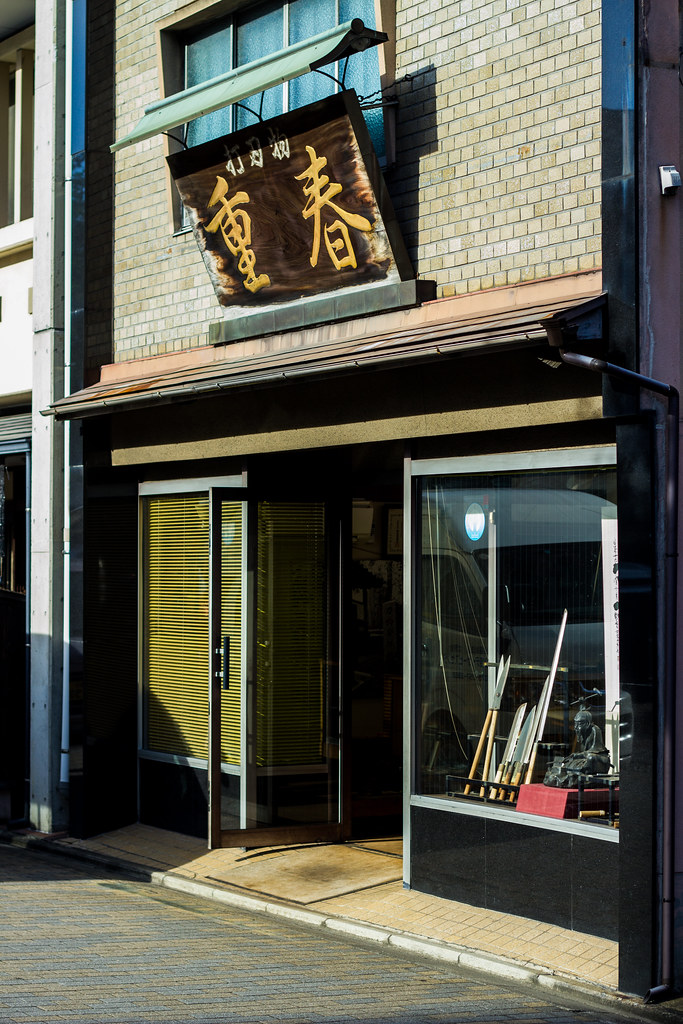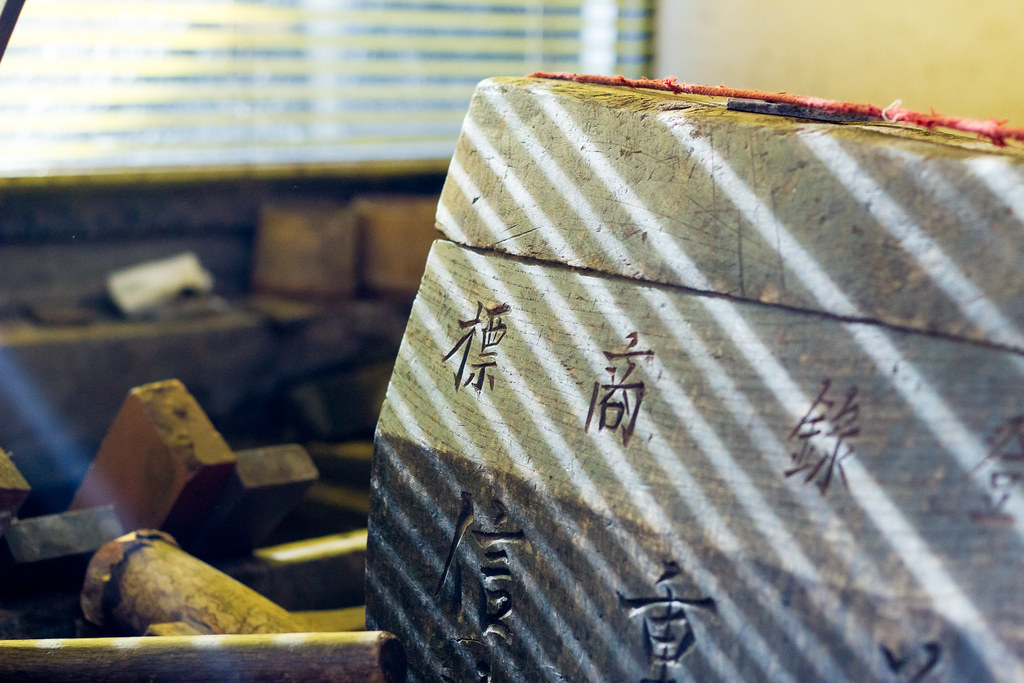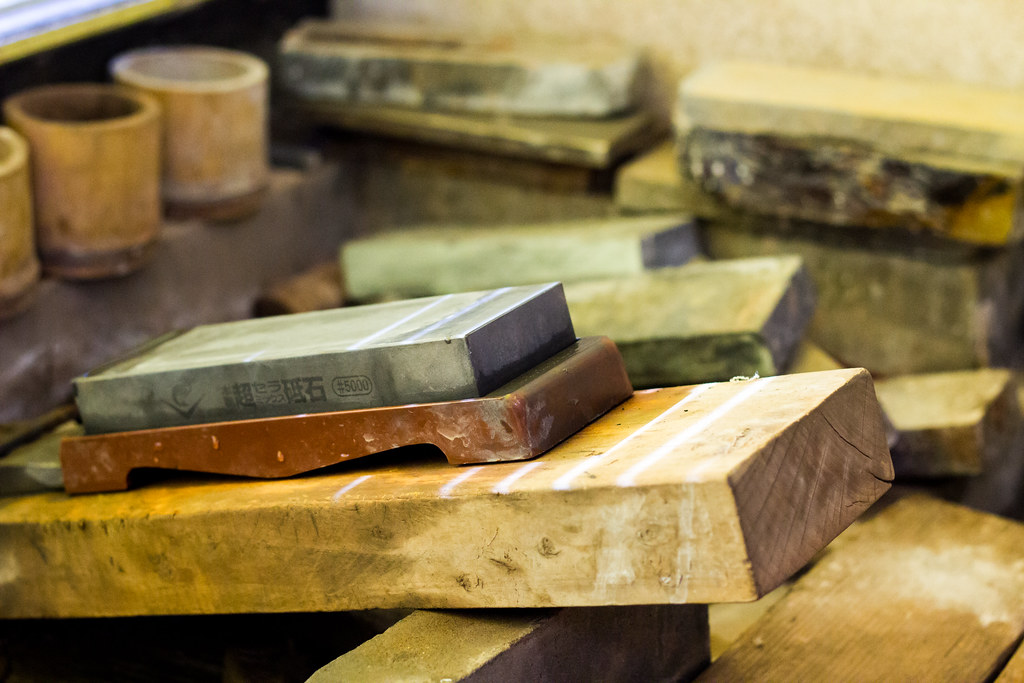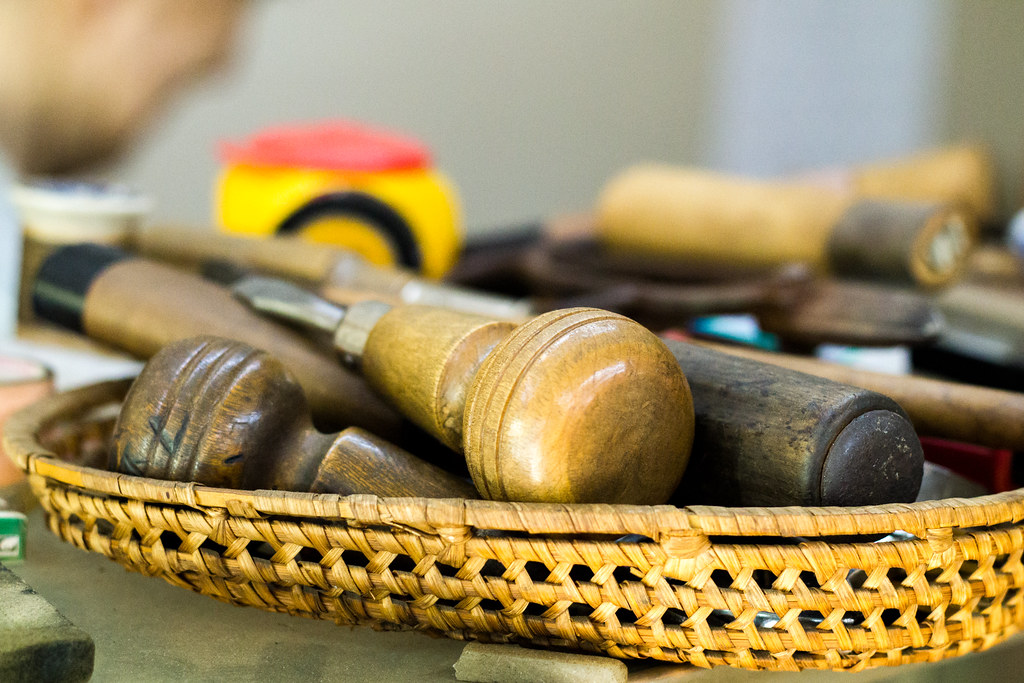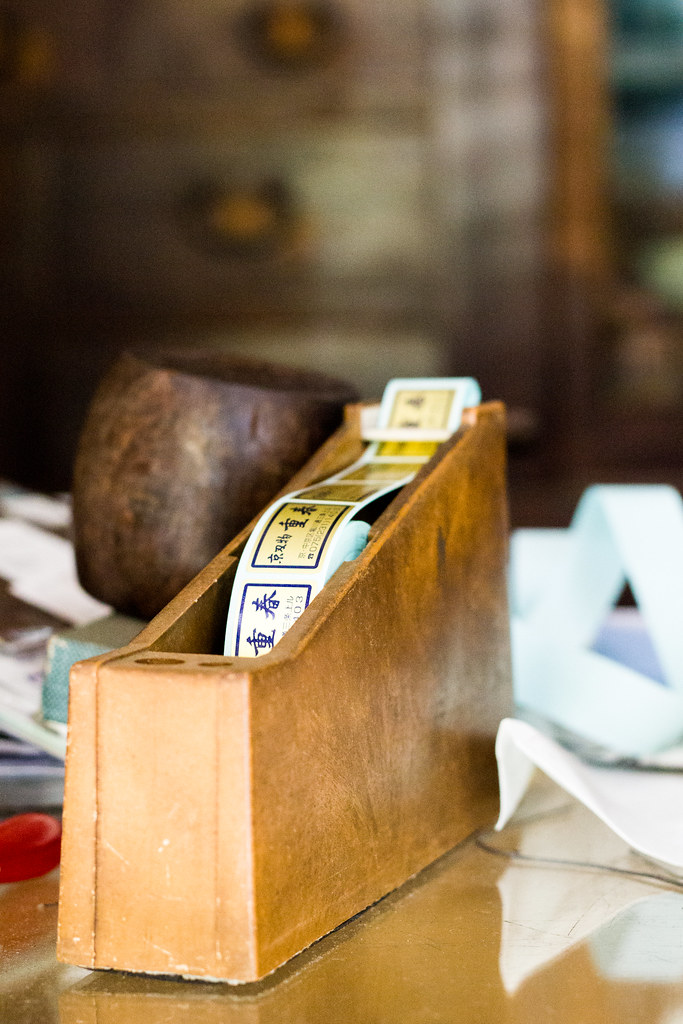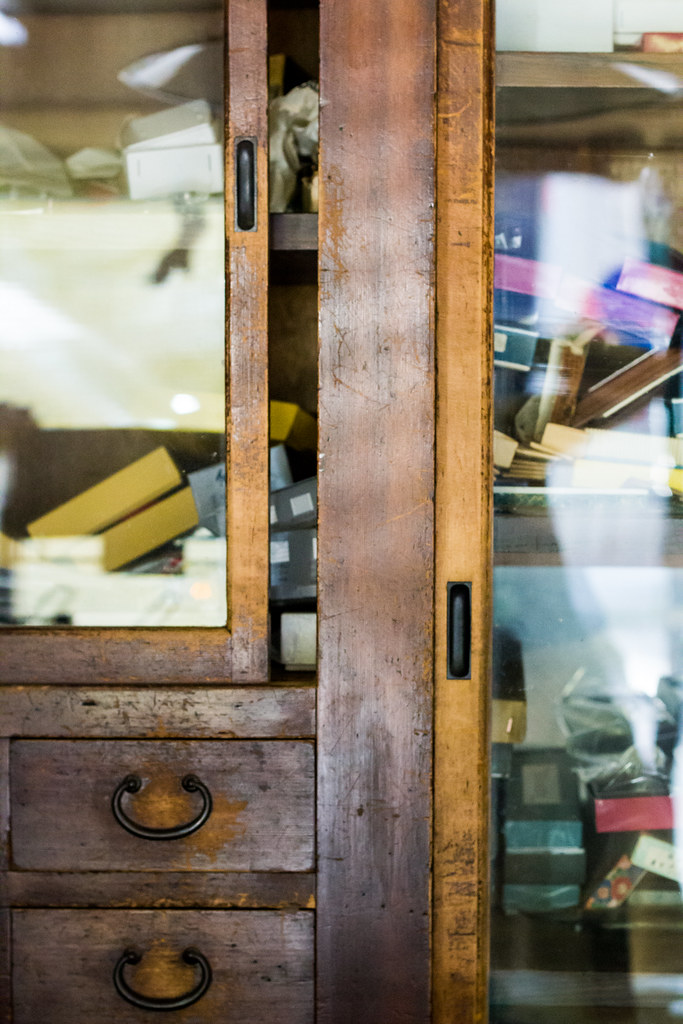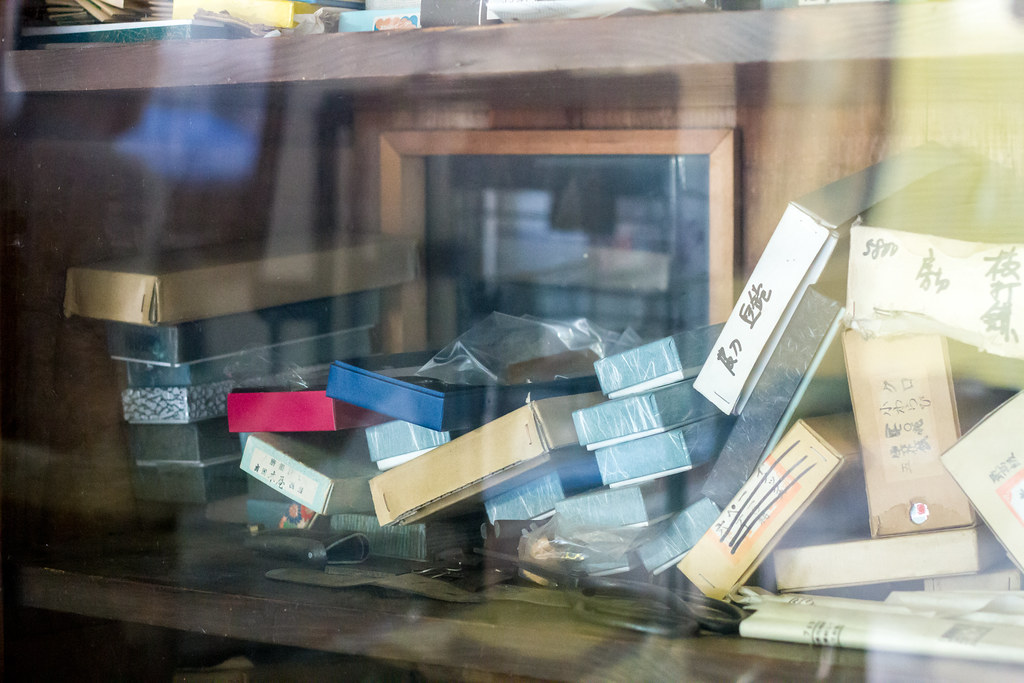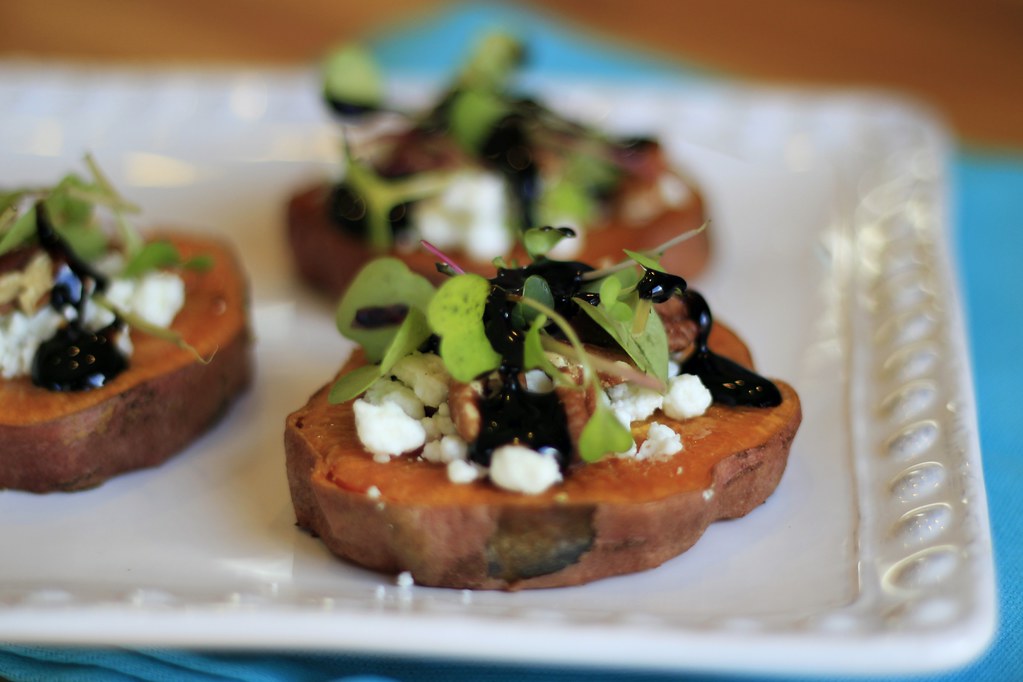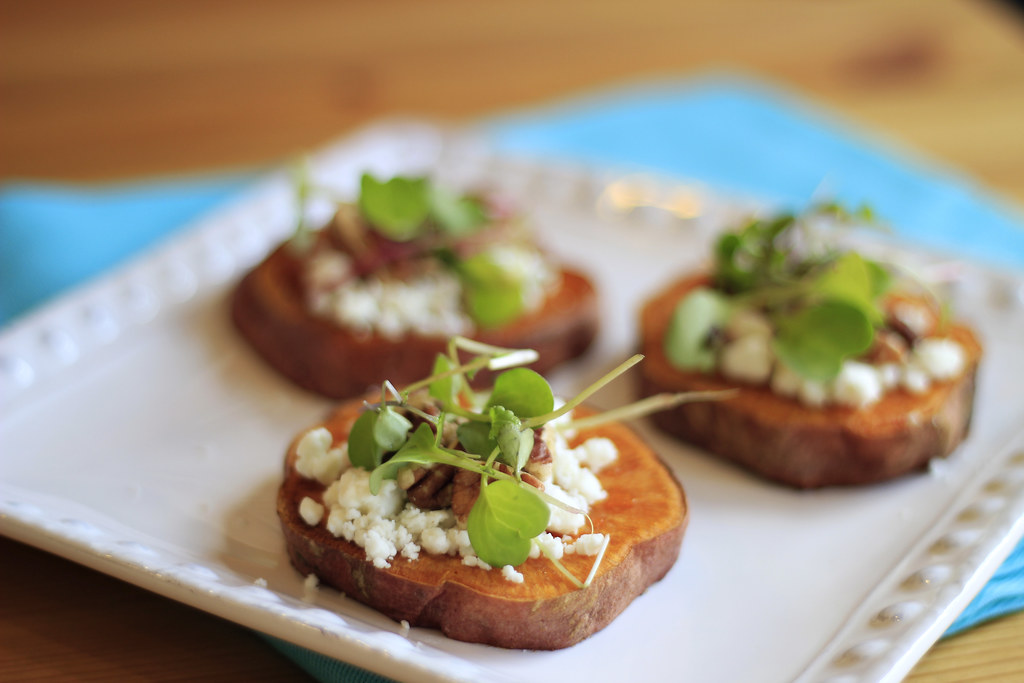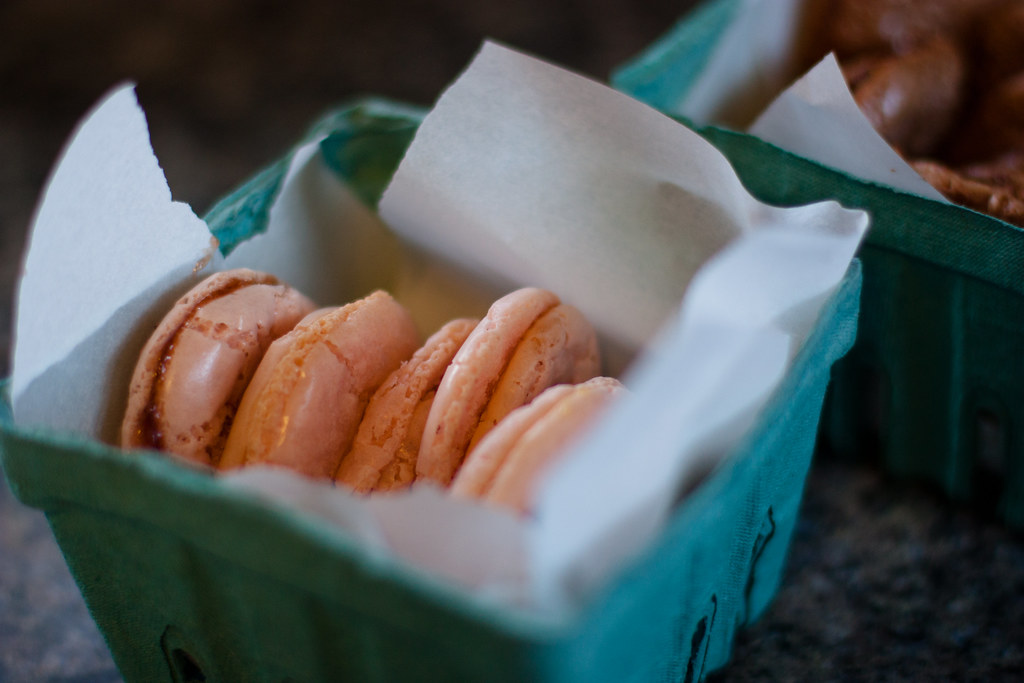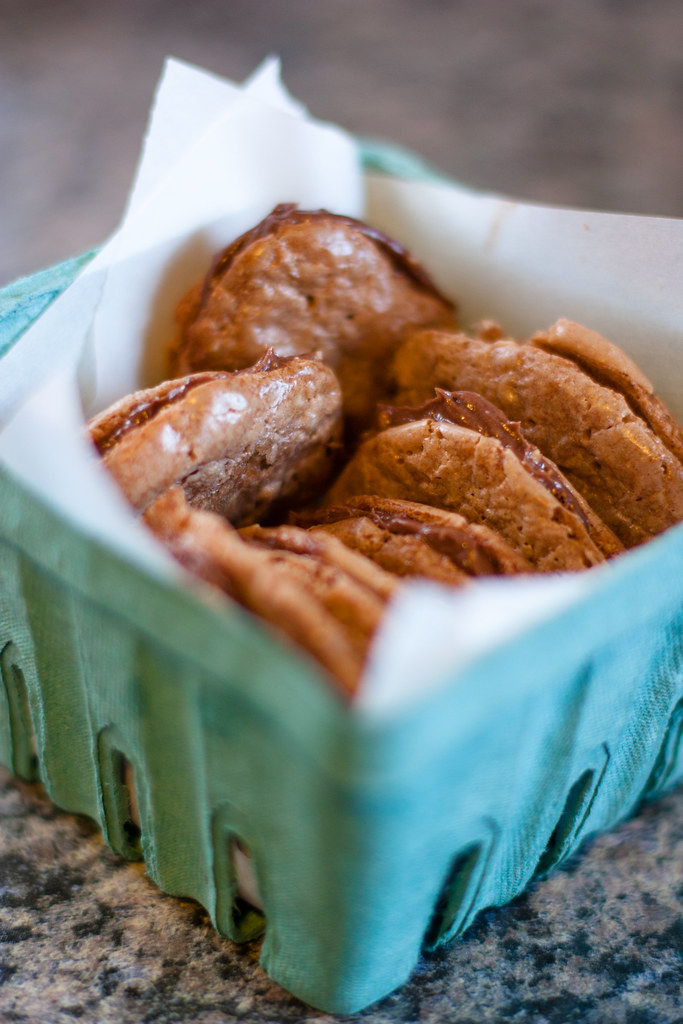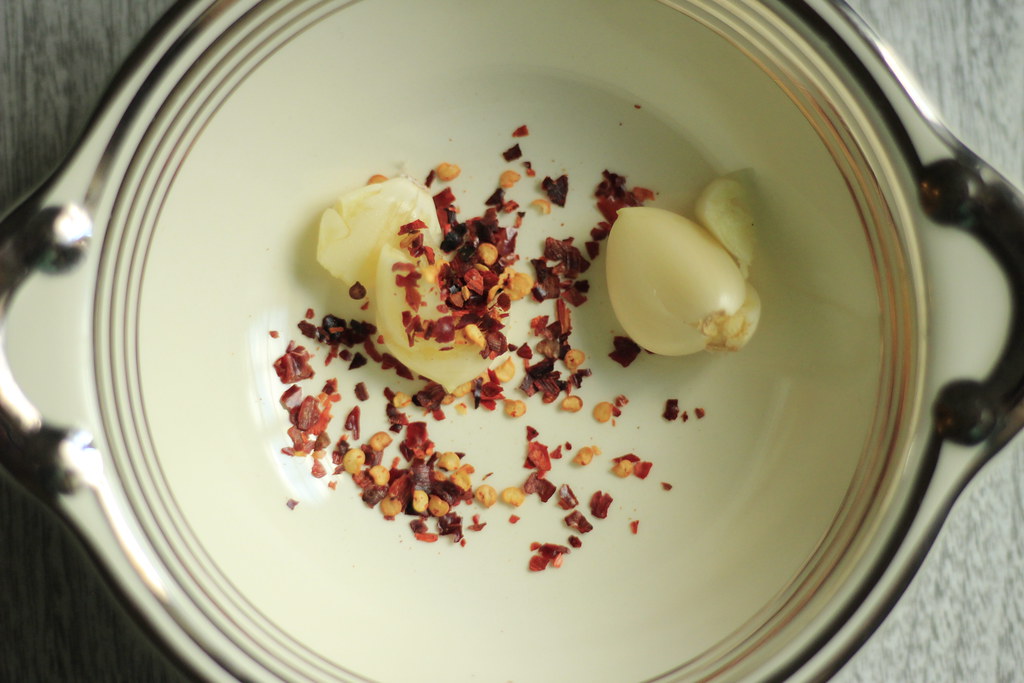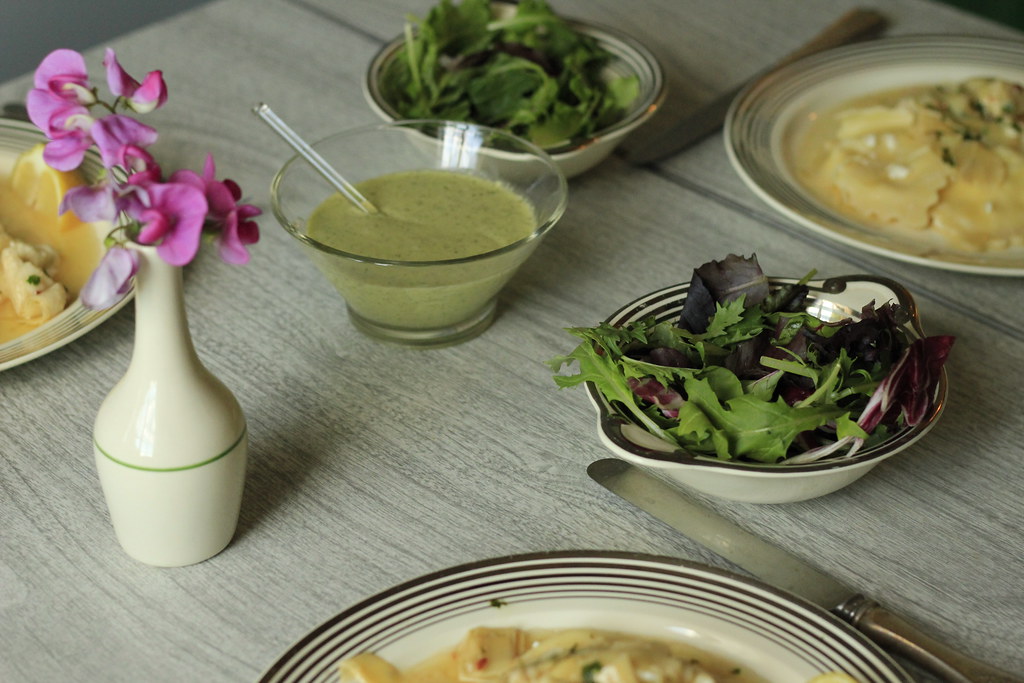This is the second part of a two part series on buying kitchen knives in Kyoto. You can find the first part here.
職人はまず経験を身につけます。ここで「伝統」という言葉を使うのは抵抗があるのですが、職人に経験を身につけさせるには、伝統が必要です。
First, the craftsman gains experience. We hesitate to use the word "tradition" here but for the craftsman to gain experience tradition is necessary.
Kayakawa Hamonoten, a small knife shop owned by a nearly 80-year-old Kyoto born man named Hayakawa Masaya, is tucked away on the south side of town in a classic Kyoto residential neighborhoods where traditional style homes and shops mingled in maintained but worn buildings.
The owner was not there on the blistering Wednesday I arrived but I had the pleasure of meeting Nakashita Kenji, who ran the shop when the owner was not there. He spoke slightly more English than the proprietor at Shigeharu and we were able to easily pick out exactly what I wanted - a small all purpose knife, with something engraved on it. He placed three or four knives of that description in front of me and I chose the one that I wanted, a simple and relatively inexpensive chef’s knife with carbon steel enclosed in stainless steel. On a whim, I also asked for a sharpening stone.
“Do you know how to use this?” he asked me as he chose one from the piles of stones he had for sale on the floor underneath the knife cabinet.
I told him I did not.
“I'll show you,” he offered, asking if I had time. He walked me across the shop to the sharpening basin behind the counters and cabinets crowded into the tiny shop space. Reaching into the water, he pulled out a double sided stone similar to the one I intended to purchase. He set it on the wooden plank that extended from the edge of basin into the water and rifled in a drawer to pull out a dull, worn kitchen knife, perfect for practicing on. .
“First,” he said pointing to the rough side, and then flipping the stone to the finer side, “Second.”
He sat down and lined up the knife at a 90 degree angle, then tilted the knife again to cut that angle in half to 45, and then tilted it again in half to cut that angle to 23 degrees. He once more tilted it, and ended up with roughly a 10 degree angle.
As he began to pull the knife across the stone he told me to listen to the sound.
“Listen,” he directed. He pulled and pushed the knife across the rough side of the stone. As he did this, the sound didn’t change. It remained a satisfying merger of metal on stone, a wearing down of an old worn thing, the mistakes and inconsistencies leaving as it was ground to an edge against that stone. I could see that his fingers were spread out across the blade of the knife and at each point of contact neither the angle nor the pressure changed. It was consistent. He showed me the edge, where a small bead had formed. He flipped the knife over and repeated the same thing, pointing out the consistent 10 degree angle, the pressure, the pull and the push, and most importantly, the sound as he scraped it.
After he had demonstrated the correct method, he began to do it incorrectly to show me the difference. The sound changed, it became more metallic, as if the blade was singing alone. He was manipulating the knife with inconsistent pressure. The blade seemed to be vibrating in response, and the sound rung.
Then, he changed the angle of the blade, tilting it away from the stone and though it sounded less metallic. The sound became narrower, more like a slice and less like a scrape. Quickly, he returned the angle, and spread his fingers out over the blade to regulate the pressure once more. Again I heard the right sound, the marriage of metal and stone. After a few more pulls he showed the edge to me. There was a fine burr where the metal had started to fold away and raise up.
He flipped the stone over to the finer grit, and repeated the process on each side of the knife and each time he turned the knife the burr became smaller and smaller. He pulled the knife away from the stone, just a fine, minuscule burr left, even along the edge, almost undetectable by the eye.
“You try.” he said. I was a little unsure but I seated myself at the stone basin and he handed me the knife. I tried to replicate the position of his fingers, the angle of the knife, and the pressure that was consistent through the push and the pull. It was more difficult than it looked and he corrected the angle a few times. Eventually, after a little practice he seemed satisfied with the technique I had picked up. I handed him the knife and he inspected the edge. He had done most of the work to sharpen the knife, I had done a quarter of what he had done, and it had taken nearly twice as long, but in that time I was able to grasp the mechanics of the process.
As we finished up, he took the knife that I had chosen and sharpened it, swiftly and quickly, at the stone basin and took a tiny chisel and engraved the kanji for “royal family” on one side of the knife. Finally, he wrapped it up, handed me the box, and I paid him for it. I thanked him and snapped his photograph.
I walked out of the air-conditioned shop into the heat of the Kyoto summer, blinded by the low hanging afternoon sun.
Now I'm back home in my kitchen in Seoul. I don't struggle and hack into my vegetables any more. My time spent cooking is made both more enjoyable and faster. When I hold the knives in my hand I’m reminded of those sweltering Kyoto days. Best of all, I pull out my sharpening stone every week or two and pass the knives over it, fine tuning the edge. I listen to the metal ringing against the grit of the stone and I practice my still shaky and slow passes. I know with time I will get better. This life, I am beginning to understand, is so much about practice, about being taught. And about waiting. And about finding that one perfect thing at the end of all that waiting.
You can find Kayakawa Hamonoten Sakaimachi-dori, halfway between Bukkoji-dori and Ayanokoji-dori. The closest station is Kawarmachi. Exit the station and head west along Shijo-dori. You will pass the Kyotodai Shrine on your left. Keep walking about six blocks and head left (south) on Sakaimachi-dori. It will be a block and a half down. Keep your eyes open for a very small shop with the unique sign pictured on the first photo of this post.

